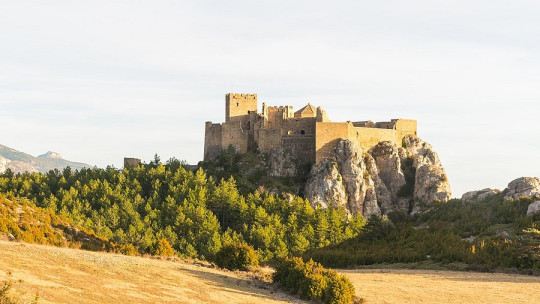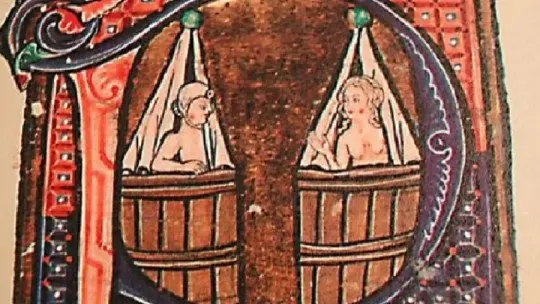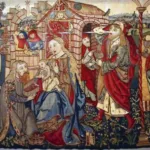The castle is, along with the cathedral, the symbol of the Middle Ages. This building has been recreated in many films and novels, and is an important part of the popular imagination regarding this historical period, as well as the place par excellence where classic stories are set.
But what, really, were medieval castles? What function did they have? What were the types of castles? In this article we are going to delve a little into the construction of these fascinating buildings, and we will understand a little more about what meaning they had in the Middle Ages.
The main types of castles in the Middle Ages
The medieval castle has effectively become the symbol of the medieval era. However, in the thousand years that this historical period lasted, many types of constructions have occurred. Let’s see them below.
1. The first castles, made of wood
The eminent medievalist Jacques Le Goff (1924-2014) collects in his essential book The Middle Ages explained to young people An interesting fact that we often forget: that The first castles were built of wood, not stone
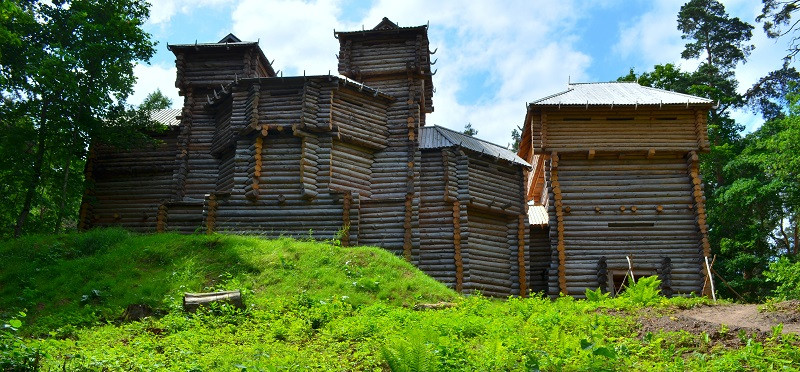
Indeed; During the first medieval centuries, these frontier constructions were built using organic materials. Wood, in a Europe where forests abounded, was much easier to find and, furthermore, much more manipulable than stone.
Another cause for this constructive option emanates directly from the historical context: during the centuries immediately after the fall of the Roman Empire, the borders were very unstable and, therefore, The places where the king and his troops settled were constantly moving Thus, a wooden building was more practical, both because of the ease of finding the materials and the speed of its construction.
What was the disadvantage of fortresses built in wood? Which, obviously, were easily caught in the flames. Fires were frequent, and there were many castles that burned on all four sides, causing chaos, desolation and death.
From the 11th century, and again following Le Goff, we began to find stone castles Again, this change in typology makes complete sense; In the 11th century the borders were more or less stabilized, and Europe was experiencing a time of prosperity and growth. It is the time of the Crusades, of the flowering of the first Gothic, of the renaissance of cities, of universities, of Scholasticism. A new construction for a new world.
2. Castles of the feudal era: stone fortresses
The castle is the symbol of the feudal system, the pillar of the central centuries of the Middle Ages Let us remember that feudalism was a political, economic and social system that predominated in Europe more or less from the 9th century to the 14th century. We do not mean by this that feudalism did not exist after the 14th century (nothing could be further from the truth), but we do mean that it was an evolved and changed feudal system, which had practically nothing to do with the feudalism of the full Middle Ages. , the time of its greatest splendor.
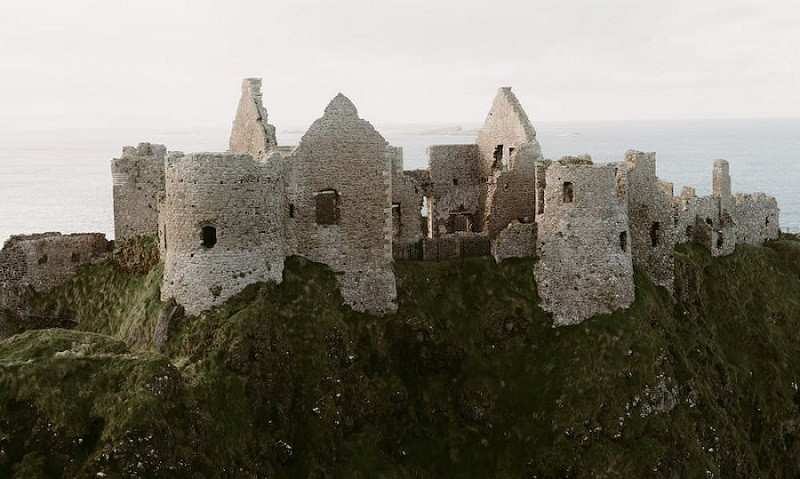
The central figure of the feudal system was the lord, around whom revolved a series of vassals who swore allegiance to him. These pacts were extremely complex, and often had nothing to do with wealth or power. For example, the Plantagenet of England were, in the 12th century, vassals of the king of France; However, his possessions more than doubled those of the French king (a fact that, by the way, was one of the causes of the Hundred Years’ War).
Thus, the knight received some land in exchange for loyalty to his lord, and became the owner of these territories for all purposes. Europe became, in this way, a conglomerate of private plots, which belonged to a family or lineage. The concept of the state, of a “public thing” (the Roman res publica), had ceased to exist.
The gentleman who received the plot of land in turn received the peasants who worked on it. These peasants, known as serfs, were obliged to work the terra indominicata, which belonged directly to the lord. At the same time, they were granted a small plot of land for their own subsistence, which they owned only in usufruct, since everything the land contained was the property of the lord. Even mills, bridges and forests were under his jurisdiction, and he often established a fee or tax for the use of it.
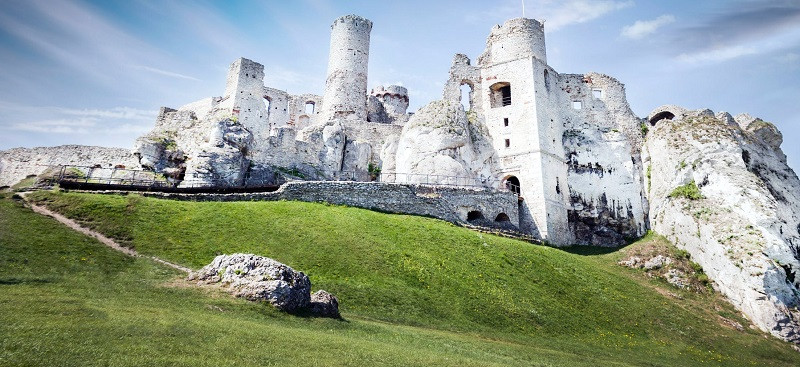
In this social and economic context, medieval castles proliferate, some constructions that have nothing to do with what the movies show us : cold, uncomfortable and dark. We will talk about it in more detail in the next section.
3. The last castles in the transition to the Renaissance
In the 14th century, a new invention became all the rage on the battlefield: gunpowder. That’s when New siege weapons begin to proliferate, marking the end of medieval castles The canyon is one of them.
The castle walls of the Middle Ages were not prepared to withstand the impact of a projectile fired from a cannon. Soon, this new weapon renders the walls useless.
Thus, little by little, partly because of these technical innovations, partly because of the political change that is taking place in Europe, castles evolve from impregnable fortresses to luxurious residences , which serve as a delight for their owners. It is enough to contemplate the magnificent castles of the Loire Valley, in France, to realize the change that has occurred in this type of buildings. Castles such as Chambord, built by Francis I in the 16th century, or Chenonceau, where Queen Catherine de Medici lived for long periods, are a living testimony of the new mentality that was emerging in Europe.
In the 15th century, some changes began to take place. The rulers ordered the construction of Renaissance-style fortresses, aimed at comfort and leisure Although it is true that they still show defensive elements, such as walls or towers, the castles of this era were already designed for enjoyment and ostentation. In reality, these castles (which in French retain the name, chateau), can no longer be called as such; They are palaces created for the personal enjoyment of the monarch.
The following century represents the deployment of this type of castle-housing. The construction has definitively lost all defensive function and has become the place where the king and his court stay.
They then proliferate the magnificently decorated halls, the spacious rooms, the comfortable rooms where there is no shortage of luxurious beds, curtains and exquisite furniture; and, above all, art multiplies everywhere. The aforementioned Francis I was an extraordinarily cultured monarch who, displaying the humanism prevailing at the time, protected artists of the stature of Leonardo da Vinci, who died precisely in France, in the castle of Amboise. The groups of rude soldiers have given way to the refined Renaissance courts.
Characteristics of castles
The typical castle of the feudal peak years (10th-12th centuries) is a building of variable size, whose main spaces are the parade ground and the keep The first is the large central opening from which the fortress rooms are distributed, and where the soldiers carry out their exercises. The parade ground also allows the entry of cars, animals and goods.
On the other hand, the keep is the most important space in the castle, and also the most luxurious. In reality, the word “luxurious” is excessive, since at that time even the nobles lived with a certain modesty, although the idea may seem surprising to us. The keep is the part of the castle where the lord lives with his family. It is generally a tall and not very wide tower, where there is a large multipurpose space that serves as a dining room, audience room, and meeting and celebration place.
Precisely because of its multipurpose nature, this space lacks furniture; The tables are mobile, as are the chairs and other objects. It is common for the walls to be covered by splendid tapestries, which fulfill a double function: first, to mitigate the intense cold; second, to demonstrate the wealth of the owner, since tapestries were a very expensive product.
The man and his wife sleep in a room in the tower ; frequently, the only one who has a bed. Other elements that we can find are chests to store clothes and some oratories, in addition to the fireplace, essential to keep the room at a good temperature. The rest of the family can have their own chamber or they can sleep together in a large room. Because, unlike what we see in the movies, medieval castles have almost no rooms.
Intimacy is quite rare; In fact, the soldiers all sleep together, on pallets, as do the servants. Of course, according to Jacques Le Goff, the cleanliness of these fortresses was impeccable (and here we break another cliché about the Middle Ages): the castles were equipped with numerous latrines that served all the inhabitants. These inhabitants could be quite numerous; Many castles were as large and populous as the surrounding villages, housing within their walls the lord’s family, soldiers, and servants with their families.
One of the meeting centers was, of course, the chapel All castles had one, since the religious element was inseparable from daily life. In the chapel or church, the liturgy and other important ceremonies such as weddings or baptisms were celebrated, as well as other celebrations of a more secular nature, such as meetings and appointments.
The walls, the moat and the drawbridge
The first castles were not houses, but fortresses. The lord lived in them, but the main function of the building was defensive. Therefore, his typology was a military typology; Some essential elements were the walls, the moat and the drawbridge.
The walls surrounded the entire enclosure and served, obviously, as the main defense of the square. They used to be tall and thick and had a walkway for soldiers. The battlements, typical in representations of medieval castles, also fulfilled a protective function , as they allowed soldiers to protect themselves from enemy arrows. The walls lacked, obviously, windows; We found very narrow openings, the loopholes, with just enough space to allow arrows to be launched from the inside, but at the same time prevent the projectiles of the besiegers from penetrating.
Many medieval castles used to have a moat surrounding the building, which did not always contain water. This moat constituted a natural barrier that slowed the enemy’s advance On the other hand, the entrance to the fortress was mobile; The drawbridge was raised at night to prevent unwanted entry.
Rural castles, but also urban ones
The typical image we have of the medieval castle is rural, but we must keep in mind that we also find this type of construction within cities. Two examples are the Palais Royal and the Louvre, both in Paris and which, originally, were medieval fortresses that stood in the heart of the city.
Habitually, The inhabitants of these urban fortresses were the kings and counts It is important to note that, in the Middle Ages, the courts were itinerant; That is to say, the king or nobleman in question moved regularly through his domain and did not have a fixed place of residence, as would happen in modern times. Thus, monarchs or nobles such as Isabella I of Castile or Eleanor of Aquitaine often traveled through the different castles distributed throughout their lands.
Here we find another of the clichés about the Middle Ages: that people did not travel. Well, yes, he did, and more than we think. Obviously, these were not constant (and fast) trips like the ones we can make today and, naturally, a peasant hardly left his native village; But we do find nobles, kings and queens who are continually moving, as well as pilgrims who travel from one place to another. Medieval men and women were much more restless than we assume.
Types of medieval castles in Europe
During the Middle Ages, castles flooded the European continent. Although they all share common characteristics, it is no less true that in each region they acquired special aspects , depending on the context and reality of the place. Let’s look at it briefly below.
1. France and the Iberian Peninsula
The castles of the Mediterranean area present the characteristics that we all have in mind when we think of a medieval castle. Wide towers and long walls, all built in stone. In general, this typology of castle, we can say, “southern”, gives the impression of a compact mass of stone, almost always located on high promontories
As examples in France we have the Foix castle, whose initial construction dates back to the 10th century, and the Gaillard castle, an impressive building that overlooks the Seine River 100 km from Paris. The Gaillard fortress was erected by order of Richard the Lionheart, and at its time was much larger and more imposing than what remains today.
In Spain, the most paradigmatic examples are the castle of Loarre a magnificent construction from the 11th century that is located in Aragón, in the province of Huesca, as well as the castle of Frías, in Burgos, or that of Osma, in Soria.
On the other hand, the conversion of the medieval castle-fortress to the castle-dwelling is widely exemplified in the numerous castles that dot the Loire Valley in France. We have already mentioned some examples, such as Chambord and Chenonceau, but we can also add Chaumont, Blois and Amboise. In most of these castles, characteristics of the Italian Renaissance are inserted.
2. Italy
Medieval fortresses can be traced throughout the Italian peninsula. Despite being, obviously, part of the Mediterranean area, The Italian reality is different, since it has historically received influences from the Byzantine East especially in the Veneto area.
The Castello di Soave, whose origins date back to the 10th century, is a beautiful example of Venetian military architecture from the Middle Ages.
Tuscan castles They are also interesting examples of medieval Italian fortresses. The fortress of Montalcino, from the 13th -14th centuries, witnessed the fierce fights between the Guelphs (supporters of papal power) and Ghibellines (supporters of the Holy Roman Emperor). Its beautiful pentagonal shapes offer a wonderful complement to the panoramic view of the place. On the other hand, the Castello dei Conti Guidi, in Poppi, is a magnificent example of Tuscan civil construction from the Trecento, despite the fact that its origins date back to the 12th century.
3. Eastern Europe
The typology of fortresses that we find in Eastern Europe differs significantly from those that dot the Mediterranean area. An example that perfectly illustrates these differences is Malbork Castle, Poland , built by the Teutonic Order in the 13th century. Its original name was Marienburg, “Mary’s Castle” (in reference to the Virgin). It is an impressive fortress located in the north of the country, on the banks of the Nogat River, a tributary of the Vistula. Its style is Baltic Gothic, characterized by the profuse use of red brick, and it represents the largest castle built with this material.

